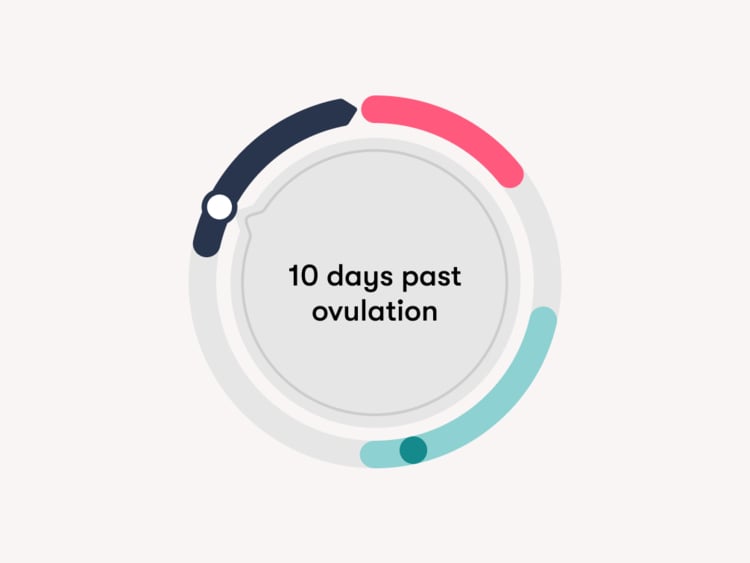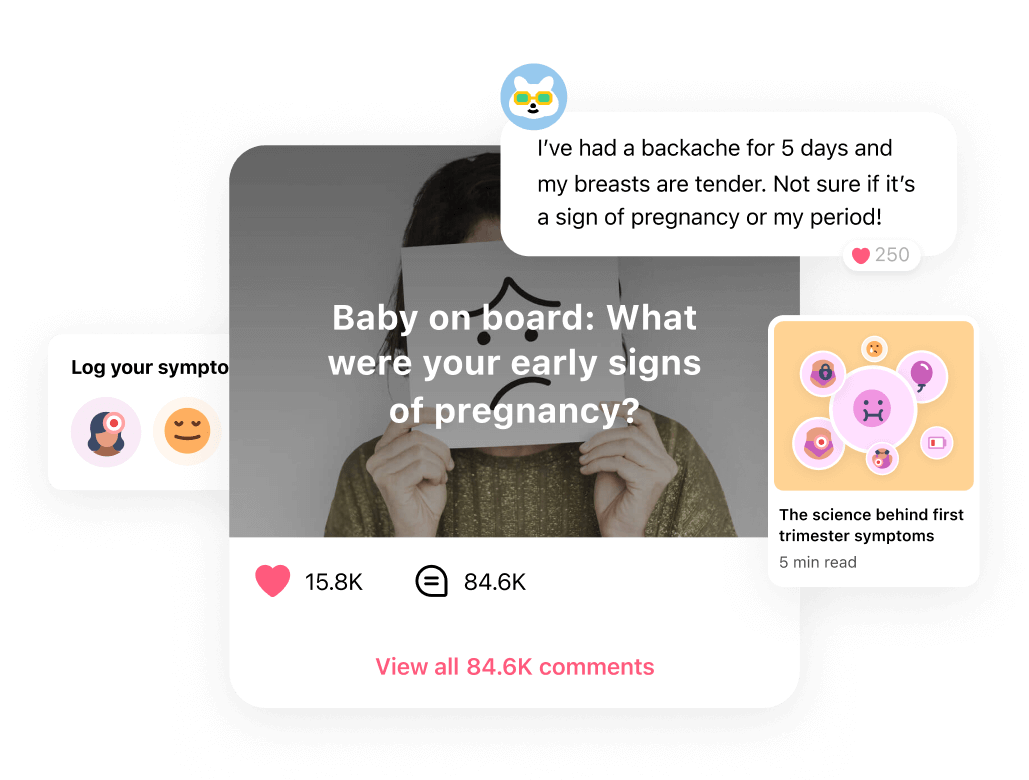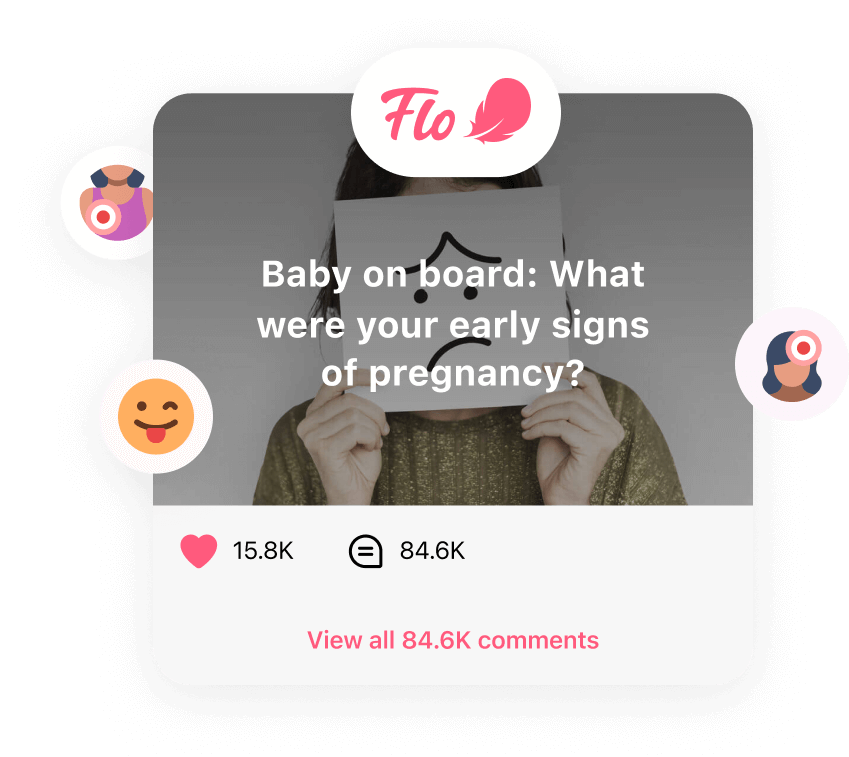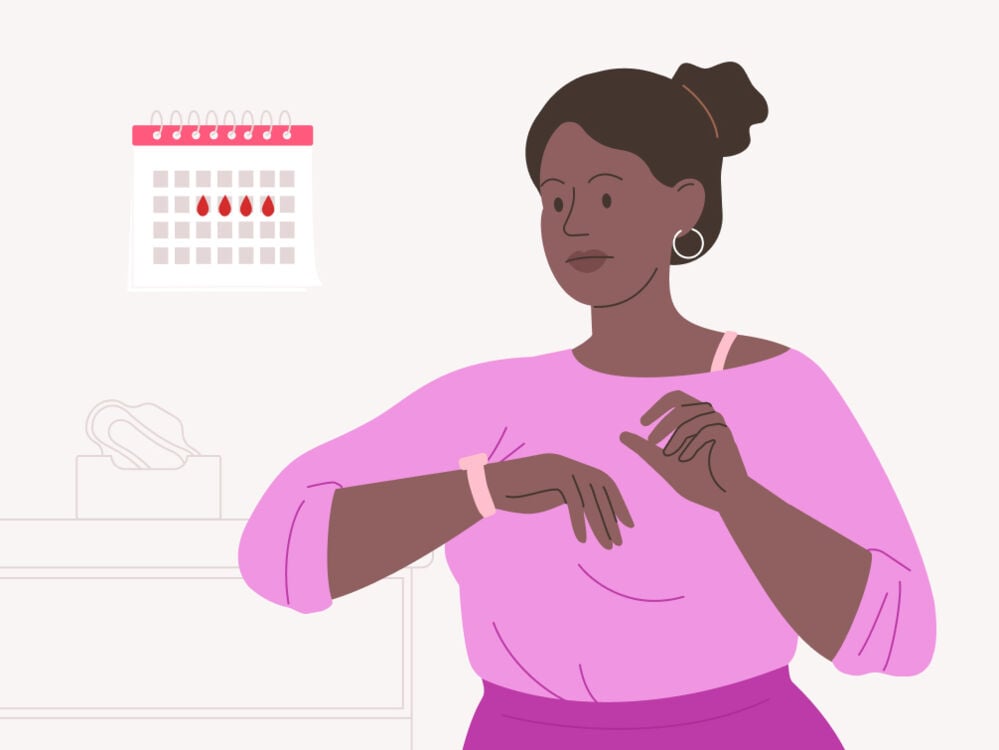Are you wondering when you can take a pregnancy test? Here’s the lowdown on 10 DPO.
-
Tracking cycle
-
Getting pregnant
-
Pregnancy
-
Help Center
-
Flo for Partners
-
Anonymous Mode
-
Flo app reviews
-
Flo Premium New
-
Secret Chats New
-
Symptom Checker New
-
Your cycle
-
Health 360°
-
Getting pregnant
-
Pregnancy
-
Being a mom
-
LGBTQ+
-
Quizzes
-
Ovulation calculator
-
hCG calculator
-
Pregnancy test calculator
-
Menstrual cycle calculator
-
Period calculator
-
Implantation calculator
-
Pregnancy weeks to months calculator
-
Pregnancy due date calculator
-
IVF and FET due date calculator
-
Due date calculator by ultrasound
-
Medical Affairs
-
Science & Research
-
Pass It On Project New
-
Privacy Portal
-
Press Center
-
Flo Accuracy
-
Careers
-
Contact Us
10 DPO/days pregnant*: Are there any pregnancy symptoms 10 days past ovulation?


Every piece of content at Flo Health adheres to the highest editorial standards for language, style, and medical accuracy. To learn what we do to deliver the best health and lifestyle insights to you, check out our content review principles.
If you’re trying to conceive, you might have heard the advice that it’s best to wait until the first day of your missed period before you take a pregnancy test. However, that can feel easier said than done. The two-week wait between when you ovulate and the first day of your next period can feel like an eternity. So, can you take a pregnancy test at 10 DPO and still get an accurate result?
Here’s what’s happening with your body at 10 DPO and why it’s so important to wait to take a test.
*What you might call 10 days pregnant is actually 10 days past ovulation (DPO). Ovulation is around the midpoint in your cycle where one of your ovaries releases an egg. Doctors date pregnancy from the first day of your last menstrual period, which happens about two weeks before ovulation. So when you’re 10 DPO, medically, that puts you at roughly 3 weeks and 3 days pregnant.
Key takeaways
- 10 DPO is still a little bit early to notice some of the early signs of pregnancy because implantation (when your fertilized egg implants into the lining of your uterus) may only just have happened. This doesn’t necessarily mean you won’t get a positive pregnancy test this cycle, though.
- You still need to wait until 14 DPO or the first day of your missed period to take a pregnancy test. This is the best time to do a test as pregnancy tests work by detecting the hormone hCG, which your body starts to produce following implantation. Your hCG levels start low at the start of your pregnancy but rise rapidly. This means by the first day of your missed period, you may have high enough levels to get an accurate pregnancy test result.
- If you test too soon, you risk getting a false negative, as your hCG levels may not be high enough to register on a home test.

 Over
7.8M
ratings averaging
4.8/5
*
Over
7.8M
ratings averaging
4.8/5
*
Understand your body’s signals with the Flo app
- Chat with others who are trying to get pregnant.
- Get trusted information on signs of pregnancy from 100+ medical experts.
- Log your symptoms and learn what they could be trying to tell you.
 Over
7.8M
ratings averaging
4.8/5
*
Over
7.8M
ratings averaging
4.8/5
*

Trying to conceive?
The Flo app can help you through the two-week wait.

 Over
7.8M
ratings averaging
4.8/5
*
Over
7.8M
ratings averaging
4.8/5
*
Understand your body’s signals with the Flo app
- Chat with others who are trying to get pregnant.
- Get trusted information on signs of pregnancy from 100+ medical experts.
- Log your symptoms and learn what they could be trying to tell you.
10 DPO: What to expect?
10 DPO is a handy way of saying you’re ten days past ovulation. You might be curious what that means if you’re trying to conceive. It can be helpful to break down your cycle.
Your menstrual cycle can be split into two stages:
- The follicular phase: The first phase of your menstrual cycle is called your follicular phase. It’s pretty easy to know when your follicular phase starts as it lines up with the first day of your period. The length of your cycle is personal to you. A typical cycle is considered to be between 21 and 35 days, and if yours is around 28 days, then your follicular phase usually lasts for the first 14 days. During this time, your estrogen levels rise, and the lining of your uterus thickens. Your ovaries also prepare an egg to be released during ovulation.
- The luteal phase: The second phase of your cycle is called your luteal phase. Typically, around day 14 of your cycle, one of your ovaries will release an egg. This is called ovulation. You can use an app like Flo or an ovulation calculator to figure out when you last ovulated. Your luteal phase lasts up until the start of your next period, and during this time, your progesterone levels rise in preparation for a potential pregnancy. It’s this rise in your progesterone levels that can cause some premenstrual symptoms like sore breasts, bloating, and fatigue.
If you track your cycle using an app like Flo, you’ll see that 10 DPO is over halfway through your luteal phase. This is a crucial time if you did conceive after ovulation. Curious as to why? It can take your fertilized egg between six and 10 days to travel down your uterine tube and attach to the lining of your uterus. This is known as implantation and signifies the start of pregnancy. This means that between six and 10 DPO, implantation may have happened, and you may now be pregnant.
“After implantation, the new pregnancy begins secreting increasing levels of pregnancy hormones, like hCG and progesterone,” explains Dr. Renita White, obstetrician and gynecologist, Georgia Obstetrics and Gynecology, Georgia, US. “These rising levels help to maintain the pregnancy so your body doesn’t trigger a menstrual cycle, but also can cause bothersome symptoms typical for pregnancy.”
These hormone changes are important as human chorionic gonadotropin (hCG) is the pregnancy hormone that at-home tests detect in your pee. It’s produced by your placenta — a whole new organ that your body makes to support your pregnancy. While your hCG levels start very low just after implantation, they increase rapidly during your 1st trimester.
Can I take a pregnancy test at 10 DPO, or is it too early?
When you’re trying to conceive, it can be tempting to reach for a pregnancy test as soon as you suspect you’re pregnant. And — if implantation is most likely to happen between six to 10 days after ovulation — then it makes sense to think you can now take a test. However, frustratingly, it may still be a little bit too early.
If implantation has happened and your pregnancy starts to progress, then you are classed as pregnant. However, your body will have only just started producing hCG, so your levels will still be very low. At 10 DPO, you’re around four days away from the suggested time to take a test. This might not sound like a long time, but when you’re trying for a baby, it can be all consuming. Try to take your mind off taking a test by seeing loved ones, journaling or meditating, and getting lost in your favorite TV show or movies. Allow yourself to enjoy whatever brings you a little bit of peace.
Pregnancy symptoms at 10 DPO
As implantation may have only just happened, you might not have noticed some of the telltale signs of early pregnancy yet. Try not to worry — if you have conceived, this doesn’t mean they won’t come as your pregnancy progresses.
You might also feel slightly different at 10 DPO for other reasons. The hormone fluctuations during early pregnancy can look similar to some of the symptoms you might feel in the week before your period begins. Sometimes, the physical and emotional symptoms you experience at this time are described as premenstrual syndrome, or PMS for short. As symptoms can be so similar, it can be hard to distinguish between the two. Confusing, right?
So here are some symptoms you might feel at 10 DPO and why:
Cramping
If you search for some of the most common symptoms before the start of your period, you’ll likely see abdominal cramping at the top of many lists. It’s something many of us can relate to, but do you know why? It’s time for some cycle insights. During your menstrual cycle, the lining of your uterus produces hormone-like substances called prostaglandins. They’re some of the chemicals that help to trigger ovulation and your period. However, they can also cause your uterus to contract and you to feel cramps.
While you might associate cramps with your period being close by, they can also be a sign of very early pregnancy and implantation. If it feels like your period has come early, and you experience aches and pains, backache, or dull pressure in your abdominal area, this could be a result of implantation, when a fertilized egg attaches to your uterine lining.

Fatigue
During your luteal phase, not being able to keep your eyes open in the afternoon could be attributed to hormone changes and premenstrual symptoms. Experts think that as your progesterone levels rise, you may feel calmer and more tired. So, allow yourself to curl up on the couch with a blanket every so often.
Hormone fluctuations may mean you might feel similarly tired at the start of pregnancy. At 10 DPO, it can be tough to tell the difference between period-related fatigue and if it’s a sign that you’re expecting.
Breast changes
Abdominal cramps aren’t the only aches and pains that are often associated with premenstrual symptoms. Your boobs may also be tender or sore around the time of your period. This is described as cyclical breast pain and can happen because your breasts are hormone sensitive, which means as your hormones fluctuate, your boobs can look and feel different.
Your hormones change during early pregnancy, too, which can mean when you’re expecting, you might notice that your breasts look or feel different. Amazingly, the ducts in your breasts get larger in preparation for future milk production.
Spotting
Spotting is the term given to light bleeding outside of your period. If you notice blood in your discharge or your underwear in the week running up to your period, then this is spotting. It could be caused by changes in your hormone levels, among other things. Spotting often isn’t something to be worried about.
However, at 10 DPO, you might notice spotting around the time that your fertilized egg attaches to the lining of your uterus. This is called implantation bleeding. While this is a pretty exciting sign if you’re trying to conceive, it’s important to wait a few days until the first day of a missed period before you take a pregnancy test so you can get an accurate result.
Take a quiz
Find out what you can do with our Health Assistant
10 DPO and no symptoms
If you’ve been trying for a baby for a little while, you might be waiting for the moment when you feel “different.” Spotting early signs of pregnancy can be exciting, but your fertilized egg might have only just implanted, which means it’s normal not to feel any different at all yet. No two pregnancies are the same, and aside from missing a period, you may not have any symptoms for several weeks. This is considered perfectly normal.
While not feeling different at 10 DPO is typical, it can still be an emotional time. Dr. White says, “To avoid the stress of the two-week wait between ovulation and a positive pregnancy, try to maintain a daily routine that allows you to relax and distract yourself with things you love to do.”
More FAQs
What is the most common DPO for BFP?
BFP simply stands for big fat positive — another way to describe a positive pregnancy test. The most common DPO for a BFP is the first day of your missed period, so 14 DPO or later. By then, your levels of the pregnancy hormone hCG should be high enough to register on a home pregnancy test.
Can I test negative at 10 DPO and still be pregnant?
The two-week wait between ovulation and the first day of your period can feel like an eternity. It can be tempting to do a test around 10 DPO just to see if you get a positive result. However, if you take a pregnancy test before the first day of your missed period, you risk your hCG levels not being high enough to be detected (aka a false-negative test result). So yes, it is possible to get a negative result at 10 DPO and still be pregnant.
What does pregnancy discharge look like 10 DPO?
Your vaginal discharge changes during your cycle as your hormones fluctuate. Before ovulation, it may look stringy and white, resembling egg white. Just after ovulation, if you haven’t conceived, your discharge may feel drier, and you might have less of it. If you have conceived at 10 DPO, you might notice an increase in discharge, as it’s also normal to produce more discharge during pregnancy to protect your baby from infections.


Hey, I'm Anique
I started using Flo app to track my period and ovulation because we wanted to have a baby.


The Flo app helped me learn about my body and spot ovulation signs during our conception journey.


I vividly
remember the day
that we switched
Flo into
Pregnancy Mode — it was
such a special
moment.
Real stories, real results
Learn how the Flo app became an amazing cheerleader for us on our conception journey.
References
“Am I Pregnant?” Cleveland Clinic, my.clevelandclinic.org/health/articles/9709-pregnancy-am-i-pregnant. Accessed 16 Nov. 2023.
Betz, Danielle, and Kathleen Fane. “Human Chorionic Gonadotropin.” StatPearls, StatPearls Publishing, 14 Aug. 2023, www.ncbi.nlm.nih.gov/books/NBK532950/.
“Bleeding during Pregnancy.” The American College of Obstetricians and Gynecologists, www.acog.org/womens-health/faqs/bleeding-during-pregnancy. Accessed 16 Nov. 2023.
“Doing a Pregnancy Test.” NHS, www.nhs.uk/pregnancy/trying-for-a-baby/doing-a-pregnancy-test/. Accessed 23 Nov. 2023.
“First Trimester Fatigue.” Johns Hopkins Medicine, www.hopkinsmedicine.org/health/conditions-and-diseases/first-trimester-fatigue. Accessed 23 Nov. 2023.
“Follicular Phase.” Cleveland Clinic, my.clevelandclinic.org/health/body/23953-follicular-phase. Accessed 23 Nov. 2023.
“Home Pregnancy Tests: Can You Trust the Results?” Mayo Clinic, 23 Dec. 2022, www.mayoclinic.org/healthy-lifestyle/getting-pregnant/in-depth/home-pregnancy-tests/art-20047940.
Jeanmonod, Rebecca, et al. “Vaginal Bleeding.” StatPearls, StatPearls Publishing, 13 Nov. 2023, www.ncbi.nlm.nih.gov/books/NBK470230/.
“Luteal Phase.” Cleveland Clinic, my.clevelandclinic.org/health/articles/24417-luteal-phase. Accessed 23 Nov. 2023.
“Menstrual Cramps.” Mayo Clinic, 30 Apr. 2022, www.mayoclinic.org/diseases-conditions/menstrual-cramps/symptoms-causes/syc-20374938.
“Normal Breast Development and Changes.” Johns Hopkins Medicine, www.hopkinsmedicine.org/health/conditions-and-diseases/normal-breast-development-and-changes. Accessed 23 Nov. 2023.
“Ovulation.” Cleveland Clinic, my.clevelandclinic.org/health/articles/23439-ovulation. Accessed 23 Nov. 2023.
“Placenta.” Cleveland Clinic, my.clevelandclinic.org/health/body/22337-placenta. Accessed 23 Nov. 2023.
“Premenstrual Syndrome (PMS).” Mayo Clinic, 25 Feb. 2022, www.mayoclinic.org/diseases-conditions/premenstrual-syndrome/symptoms-causes/syc-20376780.
“Progesterone.” Cleveland Clinic, my.clevelandclinic.org/health/body/24562-progesterone. Accessed 21 Nov. 2023.
Sayle, Amy E., et al. “A Prospective Study of the Onset of Symptoms of Pregnancy.” Journal of Clinical Epidemiology, vol. 55, no. 7, July 2002, pp. 676–80, doi:10.1016/s0895-4356(02)00402-x.
Schoep, Mark E., et al. “The Impact of Menstrual Symptoms on Everyday Life: A Survey among 42,879 Women.” American Journal of Obstetrics and Gynecology, vol. 220, no. 6, June 2019, pp. 569.e1–569.e7, doi:10.1016/j.ajog.2019.02.048.
Solomons, Edward, and Gerald C. Dockeray. “Vaginal Discharges.” Irish Journal of Medical Science, vol. 11, 21 Oct. 2008, pp. 548–51, https://doi.org/10.1007/BF02957053.
Su, Ren-Wei, and Asgerally T. Fazleabas. “Implantation and Establishment of Pregnancy in Human and Nonhuman Primates.” Advances in Anatomy, Embryology, and Cell Biology, vol. 216, 2015, pp. 189–213, doi:10.1007/978-3-319-15856-3_10.
“The Big Fat Positive (BFP).” Tommy’s, www.tommys.org/pregnancy-information/blogs-and-stories/im-pregnant/pregnancy-insider-blog/big-fat-positive-bfp. Accessed 23 Nov. 2023.
Thiyagarajan, Dhanalakshmi K., et al. “Physiology, Menstrual Cycle.” StatPearls, StatPearls Publishing, Jan. 2023, www.ncbi.nlm.nih.gov/books/NBK500020/.
“Vaginal Discharge in Pregnancy.” NHS, www.nhs.uk/pregnancy/related-conditions/common-symptoms/vaginal-discharge/. Accessed 23 Nov. 2023.
History of updates
Current version (08 December 2023)
Published (13 February 2019)
In this article

Get your personal guide to fertility
-
Learn how to read your body's ovulation signals
-
Find daily conception tips from our experts
-
Chat with others who are trying to get pregnant




